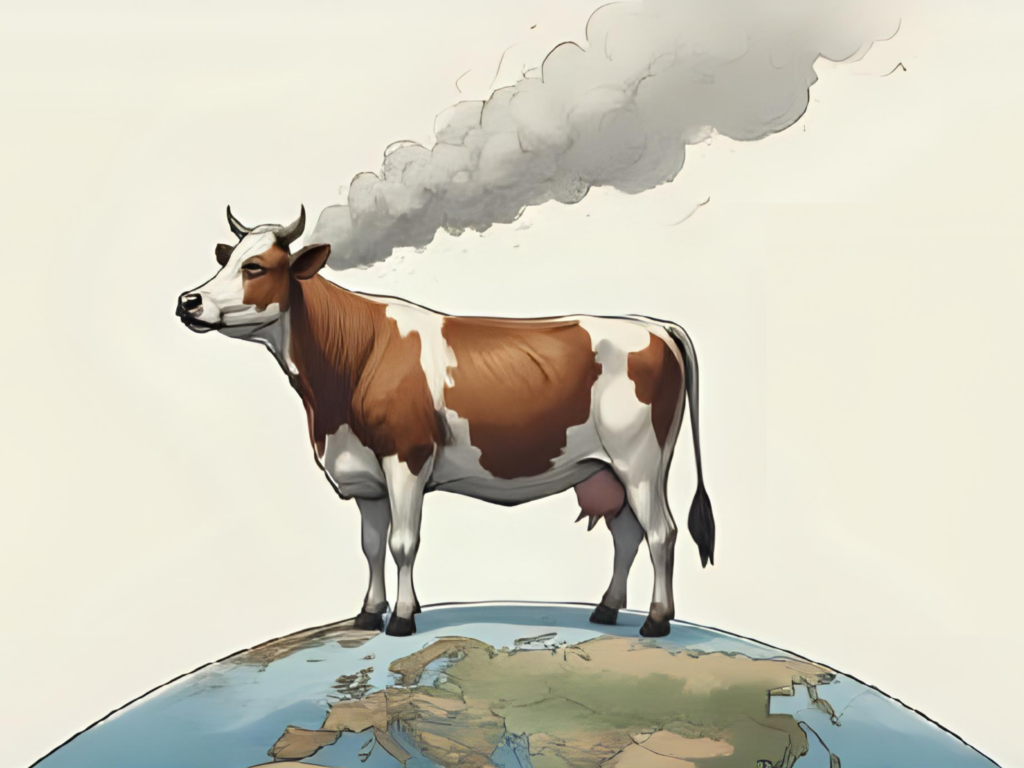
Alternative proteins are a critical lever in the shift to a truly renewable food system, which is necessary to sustainably feed the rising global population, argues a new report.
How do you feed 10 billion people when current industrial agriculture systems (and the planet with it) are collapsing?
According to Paul Gilding, a fellow at the Cambridge Institute for Sustainability Leadership (CISL), the answer lies with modern technologies.
“We are approaching a critical fork in the road. One path leads to widespread food crises and economic disorder. The other offers a renewable food system – one that is stable, affordable, and able to thrive even as the climate changes,” he said.
Gilding, a former Greenpeace CEO, has authored a paper arguing that the agrifood system is on the brink of market disruption, one that will have seismic consequences for economies, societies, and ecosystems.
“Most in the industry take comfort in a belief that transformational change is ‘difficult and complex’ and will be ‘very slow’,” the report notes, citing barriers like farmer perceptions, consumer resistance, the power of lobbies, and cultural shifts.
“They see sustainability as an optional ‘something we should do’, rather than a set of physical limits that will undermine the economics and stability of the current system, making change inevitable,” it adds.
“While comforting, these are the usual self-serving illusions of an incumbent industry. They ignore the inevitability that unfolds when change is driven by science and economics, rather than noble intentions or public opinion.”
Why we need food systems change

Transformational change is inevitable, the paper argues, for two converging reasons. Industrial farming is reaching its physical and environmental limits. Climate change, water scarcity, soil degradation, and a lack of land are rendering the current system incapable of meeting the 35-56% rise in demand by 2050. This will result in supply shocks, further inflation, and geopolitical instability.
A range of new technologies is enabling food production without traditional agriculture, combining AI and biotechnology to offer proteins and foods that will eventually be “cheaper, healthier and safer”.
In Gilding’s eyes, a renewable food system should be able to feed over nine billion people healthily and affordably, within the now rapidly changing climate and extreme geopolitical instability, while allowing for steadily growing demand for land. The industry would continue to do all this indefinitely, using resources within the ecosystem rather than extracting them and making them unavailable for further use.
“Disruptive market change is inevitable. It will either occur through the food system breaking down due to global supply instability and the resulting conflict and disorder, or through an economics-driven transformation that leverages new technologies and processes to create a stable and ‘renewable food’ supply,” he writes.
“Such a transition will be complex, non-linear and resisted by the incumbent industries. It will create significant economic and social disruptions and have major consequences, especially for farming communities and workers in related industries. This will need to be well managed to minimise negative impacts and social risks,” he adds.
Gilding also notes that new approaches to food production won’t fully replace traditional farming; instead they will mainly impact industrial agriculture such as intensive beef and dairy factory farms. However, resistance by “incumbent industries and populist politicians” could slow this transition, just as climate change risks accelerate.
How alternative proteins can enable a renewable food system

The report points out several key drivers that will disrupt the agrifood market. The impact of climate change, soil loss and water scarcity on the food system will lead to supply instability and shocks. Conversely, agriculture’s effect on the planet will come into sharp focus as the climate crisis accelerates and threatens the economy.
New production technologies – like precision fermentation and cell cultivation – and parallel tech like AI and renewable energy will accelerate the scale, quality and price reductions of sustainable food.
Gilding highlights how the current food system is built on the “first domestication”, which allowed us to master macroorganisms, and uses vast amounts of resources to grow animals and plants: “This has been hugely valuable to society, enabling us to produce ever greater quantities of food, but it is an inherently inefficient approach with huge amounts of wasted inputs and outputs.”
The new food system is being built on the “second domestication”, leveraging microorganisms and cells to grow the key nutritional elements we need. This helps us bypass the macroorganisms and produce food that isn’t just functionally the same, but in many cases bioidentical. “It is not ‘artificial food’, it is the same food being produced more efficiently,” argues Gilding.
He outlines how precision fermentation can produce foods, ingredients and nutrients currently extracted from animals and plants more efficiently, while cell cultivation can do the same from those sourced from livestock. Moreover, plant-based foods are being enhanced by technologies such as AI to be cheaper, healthier and tastier.
“Consumer acceptance of these ‘new processes’ is often raised as a likely barrier to growth – that consumers prefer ‘natural’ products to processed ones,” he writes, nodding to the ultra-processed food (UPF) debate. “The reality is, much of the food eaten today is not at all ‘natural’ in the way it is perceived. These new production processes simply allow us to grow the required food to the specifications we need, rather than breaking down macroorganisms to access them through extraction.”
Many sceptics point to a perceived negative impact on the farming community. Addressing these concerns, Gilding says the disruption will be far less (and considerably slower) for smaller family farmers and also for horticulture. “It will mainly threaten large-scale industrialised agriculture such as broadacre soy and corn, and feedlot beef and dairy,” he notes.
“Achieving a ‘renewable food’ system will probably require reductions in the food system’s greenhouse gas emissions, land use and water intensity in the vicinity of 60–90%,” he adds. “Therefore, transformation is essential. And transformation is always disruptive.”
The post Cambridge University: Alternative Proteins Are Key Drivers for A Renewable Food System appeared first on Green Queen.
This post was originally published on Green Queen.